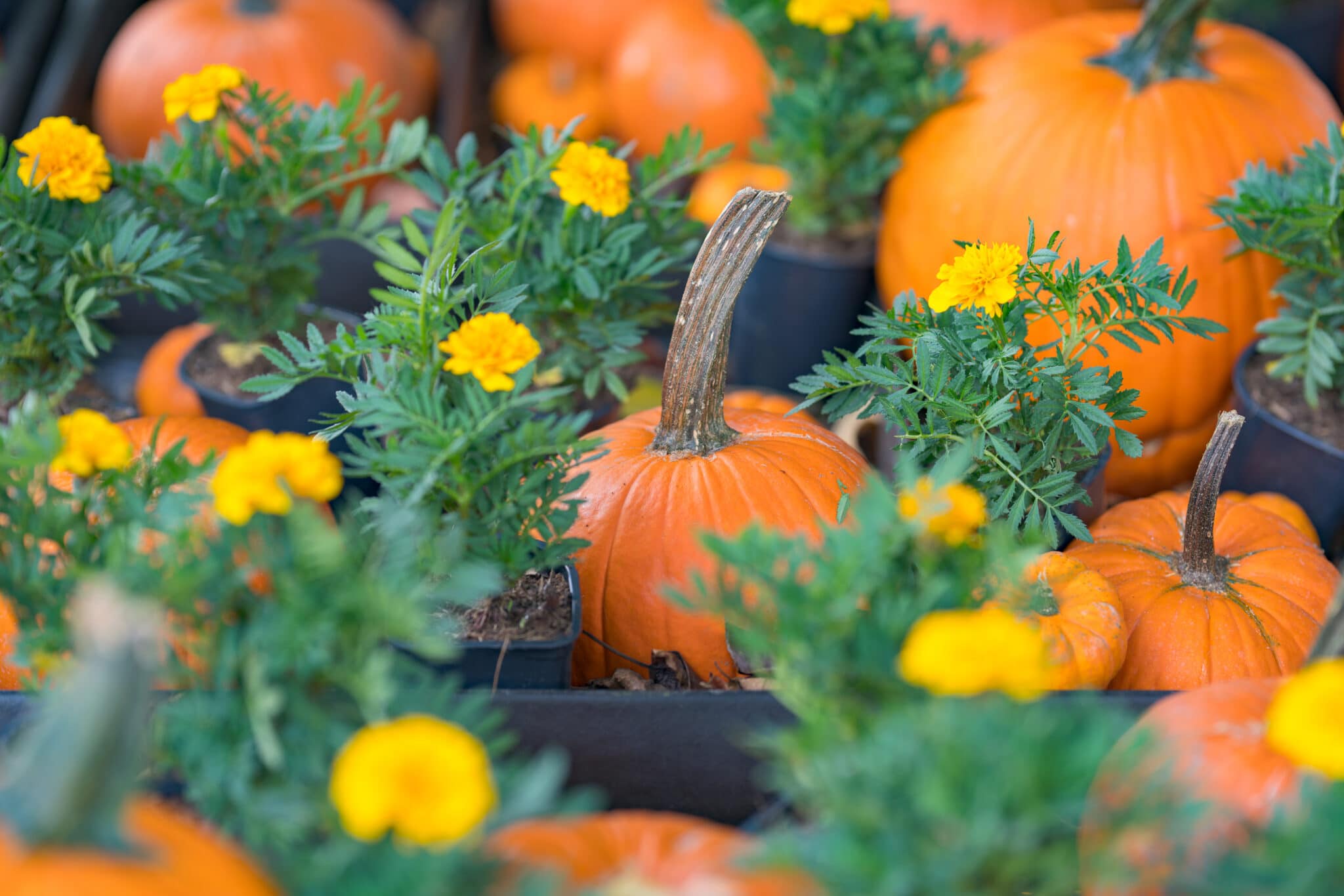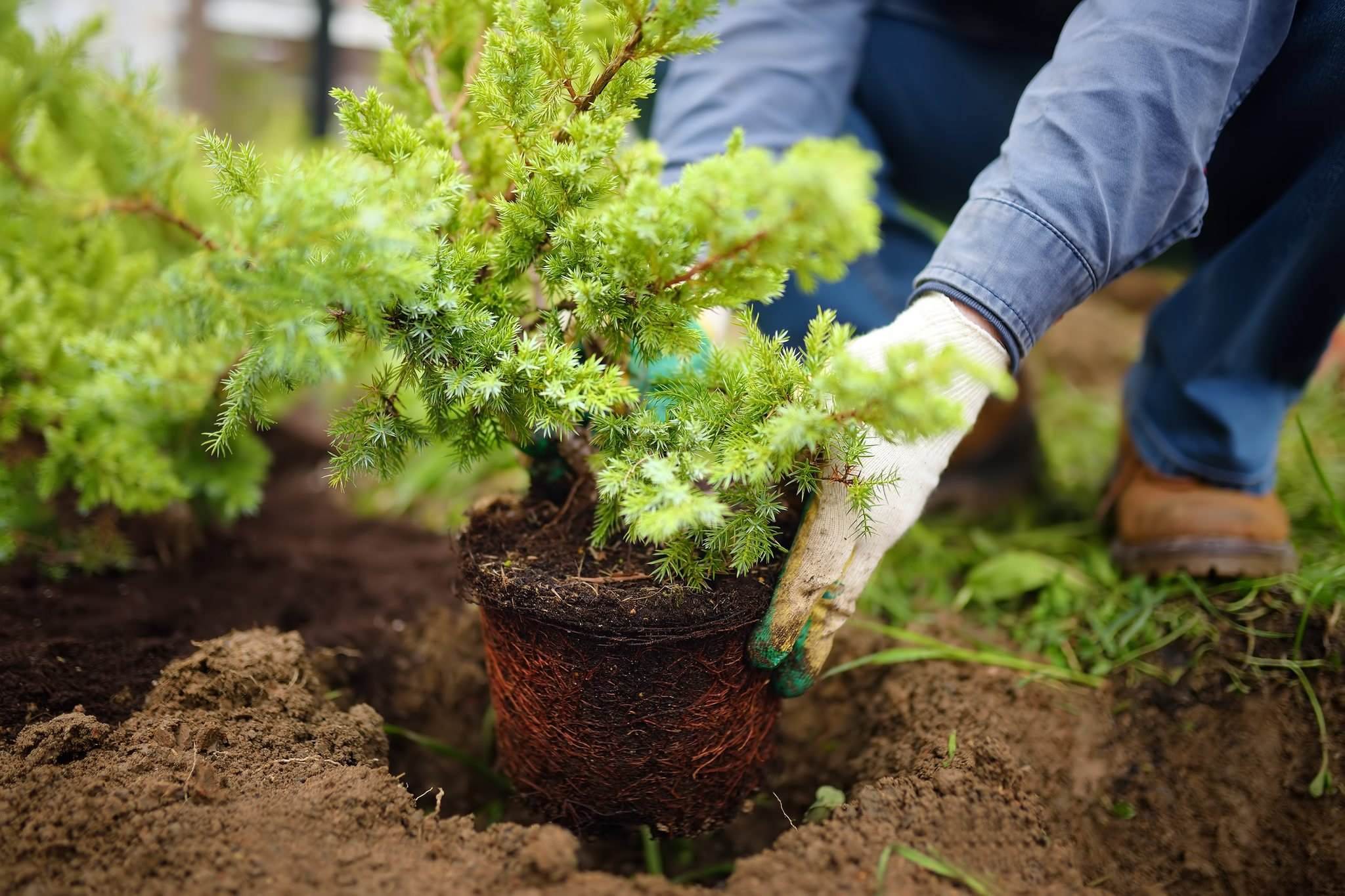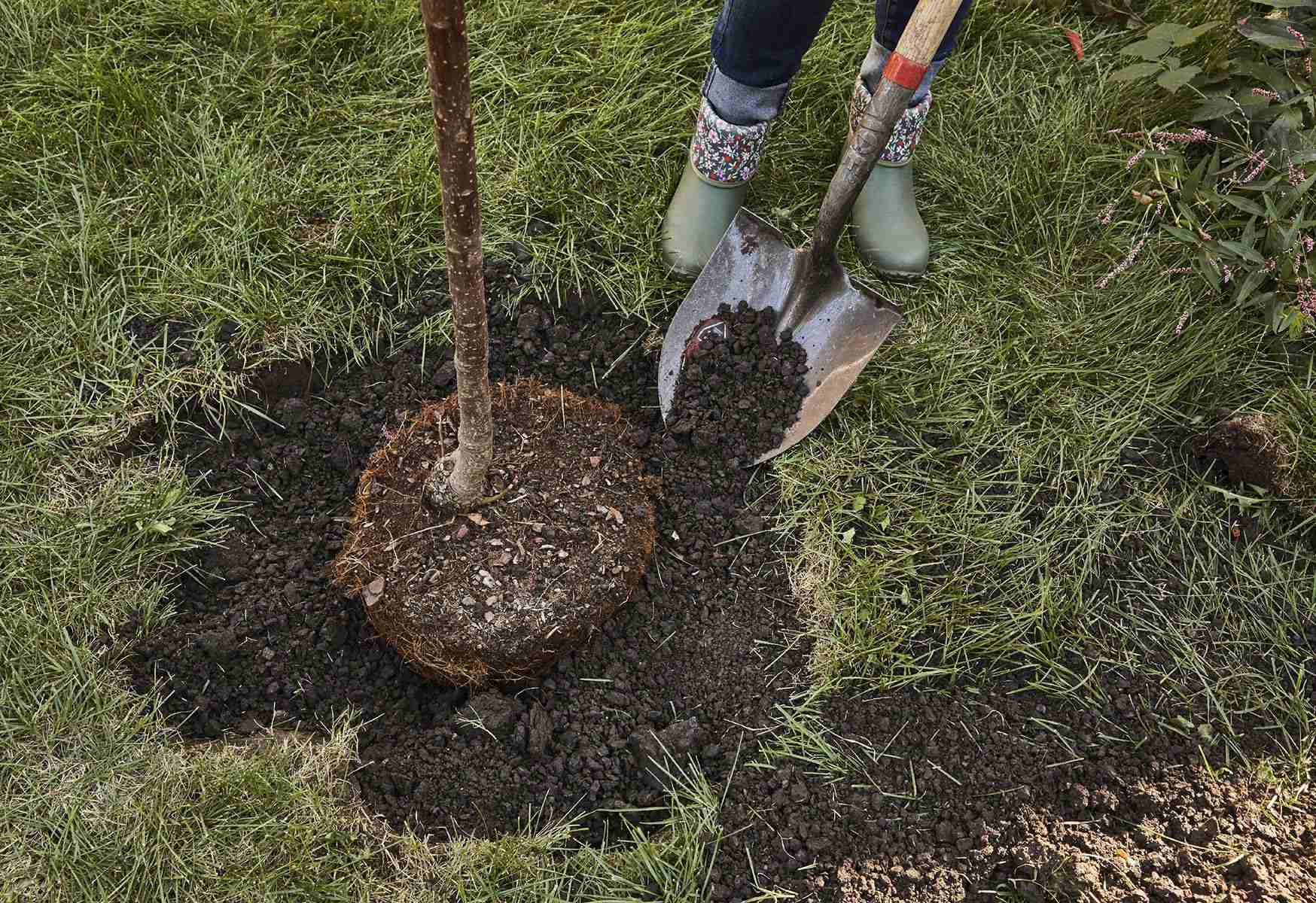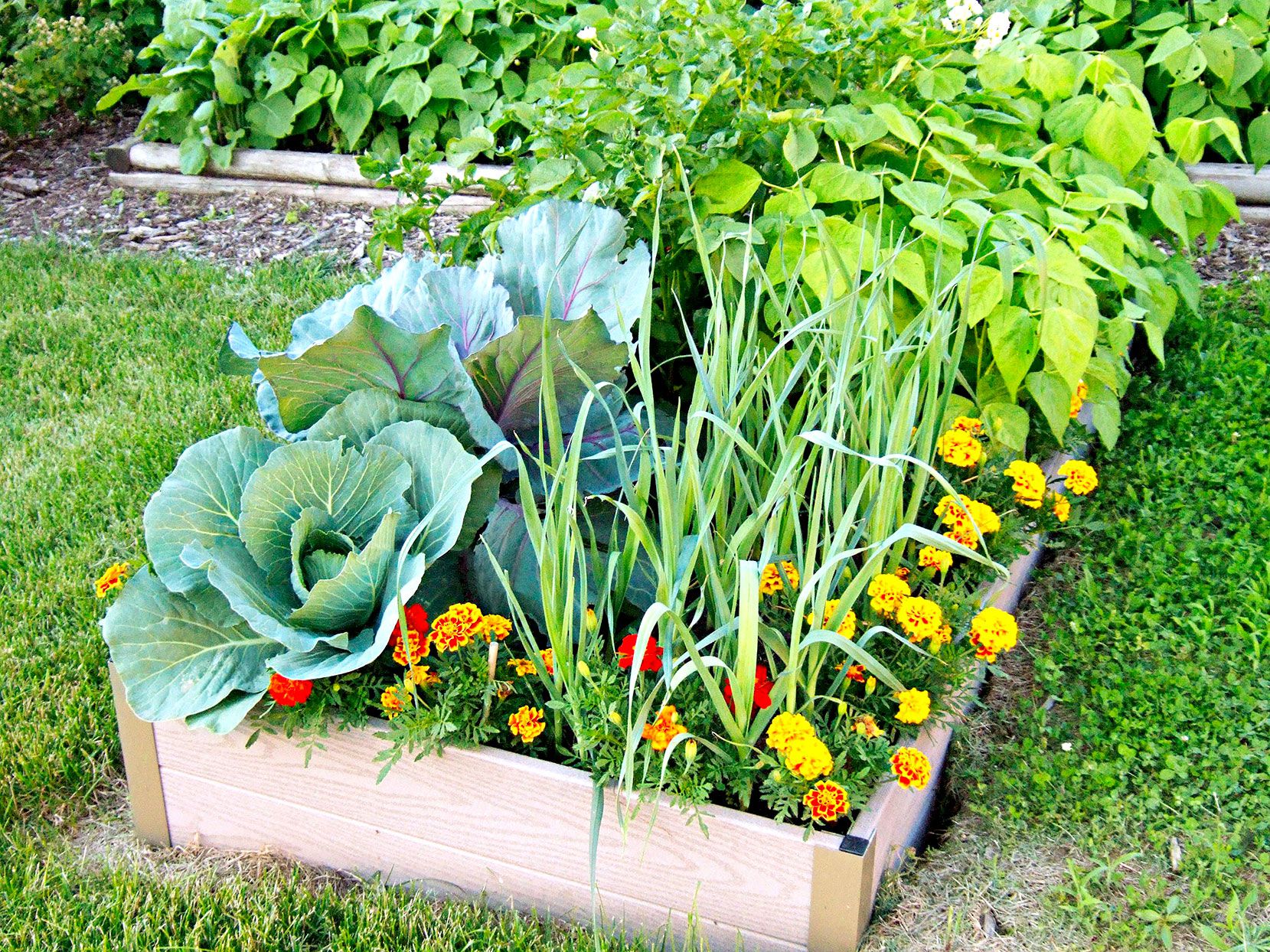Home>Types of Gardening>Edible Gardening>When Should You Start Planting Tomatoes


Edible Gardening
When Should You Start Planting Tomatoes
Modified: January 22, 2024
Learn when to start planting tomatoes in your edible garden with our expert tips and maximize your harvest!
(Many of the links in this article redirect to a specific reviewed product. Your purchase of these products through affiliate links helps to generate commission for Chicagolandgardening.com, at no extra cost. Learn more)
Table of Contents
Introduction
Welcome to the world of edible gardening! Growing your own food is not only a rewarding experience, but it also allows you to have a direct connection with nature and enjoy the freshest produce right from your own backyard. One popular edible plant that many gardeners love to cultivate is the tomato.
Tomatoes are versatile, delicious, and packed with essential nutrients. Whether you want to enjoy them in salads, make homemade pasta sauce, or simply savor their juicy flavor on their own, tomatoes are a staple in many home gardens. However, to ensure a successful tomato harvest, it is crucial to understand when to start planting them.
Timing is key when it comes to tomato cultivation. Planting your tomato seedlings at the right time will allow them to thrive and produce a bountiful crop. Several factors need to be taken into consideration to determine the optimal planting time, including climate and temperature, soil conditions, frost dates, and seedling availability.
In this article, we will explore these factors in detail and provide you with valuable insights to help you decide when to start planting your tomatoes. By the end, you’ll have a clear understanding of the ideal planting schedule for your region, whether you’re an early spring or late spring gardener.
Factors to Consider
When it comes to planting tomatoes, there are several important factors that need to be taken into consideration. Understanding these factors will help you determine the most suitable time to start growing your tomato plants.
Climate and Temperature: Tomatoes are warm-season crops that thrive in temperatures between 70°F and 85°F (21°C and 29°C). It is essential to consider your local climate and average temperature range during the growing season. If your region experiences cold winters and a short growing season, you may need to start your tomato plants indoors and transplant them once the temperatures warm up.
Soil Conditions: Tomatoes prefer well-draining soil that is rich in organic matter. Before planting your tomatoes, assess the condition of your soil. If it is heavy clay or compacted, it is advisable to amend it with compost or organic matter to improve drainage and fertility.
Frost Dates: Tomatoes are highly sensitive to frost and cold temperatures. Planting them too early can result in stunted growth or even death. Determine the average last frost date in your area, and plan your tomato planting accordingly. In general, it is recommended to wait until all danger of frost has passed before transplanting your seedlings outdoors.
Seedling Availability: If you prefer starting your tomatoes from seed, it is important to consider the availability of tomato seedlings or seeds. Depending on your location, seedlings may be available at local nurseries or garden centers. Alternatively, you can start your seeds indoors 6 to 8 weeks before the last frost date, giving them a head start and ensuring strong, healthy plants for transplanting.
By carefully considering these factors, you can make informed decisions about when to start planting your tomatoes. Next, we will delve into specific planting schedules for early spring and late spring gardeners to further guide you in your edible gardening journey.
Climate and Temperature
The climate and temperature of your region play a crucial role in determining the optimal time to start planting tomatoes. Tomatoes are warm-season plants that thrive in temperatures between 70°F and 85°F (21°C and 29°C). If the temperatures are too low, the growth of the plants may be stunted, and they may not produce a bountiful harvest.
It is important to assess your local climate and average temperature range during the growing season. If you live in a region with a short growing season or cold winters, you may need to start your tomato plants indoors and transplant them once the temperatures warm up.
One way to determine the suitable planting time is to monitor the daily temperatures. When the average daily temperature consistently reaches 50°F (10°C) or higher, it is generally safe to plant your tomato seedlings outdoors. This ensures that the soil has warmed up sufficiently for the plant’s root development and growth.
For regions with a longer growing season and warmer climates, the planting time can be earlier. These areas may have ideal temperatures for tomato growth earlier in the year, allowing for an early planting and an extended harvest season.
Remember that tomatoes are highly sensitive to frost and cold temperatures. Even if the daytime temperatures are warm enough, a sudden drop in temperature overnight can damage or kill the plants. To protect your tomato plants from unexpected cold snaps, you can cover them with row covers or cloths during the night.
By understanding the climate and temperature patterns in your region, you can determine the best time to start planting your tomatoes and give them the optimal conditions for healthy growth and abundant fruiting.
Soil Conditions
The soil conditions in your garden play a vital role in the success of your tomato plants. Tomatoes thrive in well-draining soil that is rich in organic matter. Before planting your tomatoes, it is important to assess and prepare your soil to create an ideal growing environment for these plants.
If your soil is heavy clay or compacted, it can lead to poor drainage and hinder root development. To improve the soil’s texture and drainage, you can amend it with organic matter such as compost, well-rotted manure, or peat moss. These amendments help loosen the soil, allowing roots to penetrate more easily and preventing waterlogged conditions that can lead to root rot.
In addition to improving drainage, organic matter also enriches the soil by increasing its fertility and nutrient content. Tomatoes are heavy feeders and require ample nutrients to support their growth and fruit production. Incorporating compost or well-balanced organic fertilizers into the soil before planting will provide the necessary nutrients for healthy tomato plants.
An optimal soil pH for tomatoes ranges between 6.0 and 6.8. It is important to test your soil’s pH and adjust it if necessary. You can use pH testing kits or send soil samples to a local extension office or laboratory for analysis. If the pH is too high (alkaline), you can lower it by adding elemental sulfur or organic amendments like composted pine needles. Conversely, if the pH is too low (acidic), you can raise it by adding agricultural lime or wood ash.
Regularly monitoring the soil moisture is essential for successful tomato cultivation. Tomatoes require consistent moisture but are susceptible to overwatering, which can cause root rot. Aim to keep the soil evenly moist, providing water at the base of the plants to avoid wetting the foliage. Mulching around the plants with organic materials like straw or wood chips can help retain soil moisture and suppress weed growth.
By assessing and preparing your soil to provide optimal drainage, fertility, and pH levels, you create the ideal growing medium for your tomato plants. This sets the foundation for healthy growth, robust root development, and a fruitful tomato harvest.
Frost Dates
Frost dates play a crucial role in determining the optimal timing for planting tomatoes. Tomatoes are highly sensitive to frost and cold temperatures, and planting them too early can result in stunted growth or even the death of the plants.
The average last frost date in your area is a key indicator of when it is safe to plant tomatoes outdoors. In regions with cold climates, it is important to wait until all danger of frost has passed before transplanting your tomato seedlings into the garden.
To determine the average last frost date, you can consult local gardening resources, extension offices, or online databases specific to your region. These sources provide valuable information based on historical weather patterns, helping you estimate when it is safe to plant tomatoes without the risk of frost damage.
In addition to the average last frost date, it is also helpful to know the first frost date in your area. The first frost date indicates when temperatures are likely to drop to freezing or below, signaling the end of the growing season. Knowing this date allows you to plan your tomato planting schedule accordingly, ensuring that you have enough time for the plants to mature and produce a harvest before the first frost.
If you live in a region with a short growing season, where the time between the average last frost date and the first frost date is limited, you may need to start your tomato seedlings indoors. By starting them indoors 6 to 8 weeks before the last frost date, you can give the seedlings a head start and extend the growing season.
By being aware of the frost dates in your area, you can avoid planting your tomatoes too early and protect them from the potentially devastating effects of frost. This allows your plants to thrive and ensures a productive and successful tomato harvest.
Seedling Availability
One important factor to consider when determining the right time to start planting tomatoes is the availability of seedlings or seeds. Depending on your location and local gardening resources, you may have different options for acquiring tomato plants.
Many gardeners prefer to start their tomato plants from seed to have more control over the varieties and ensure the health and quality of the seedlings. If you choose this route, it is important to plan ahead and start your seeds indoors several weeks before the anticipated transplanting date.
The timing for starting tomato seeds indoors can vary depending on the specific variety and the recommendations on the seed packet. Generally, tomato seeds are started indoors 6 to 8 weeks before the last expected frost date in your area. This gives the seedlings enough time to develop strong root systems and sturdy stems before being transplanted into the garden.
If you prefer to purchase ready-to-plant tomato seedlings, availability may vary depending on your location and the gardening season. Local nurseries, garden centers, and even online suppliers often carry a wide variety of tomato seedlings in the spring when the gardening season begins.
It is important to check with your local gardening centers to find out when they typically have tomato seedlings available for sale. This will give you a better idea of the appropriate time to start preparing your garden for planting and ensure that you can obtain healthy and robust tomato seedlings.
In some regions, there may also be specific annual plant sales or gardening events where you can find a wide selection of tomato seedlings. These events are usually scheduled around the appropriate time for planting, intending to provide gardeners with a variety of choices and resources for their gardening needs.
By considering seedling availability, you can plan ahead and make sure you have the necessary resources and options to start your tomato plants. Whether you choose to grow your seedlings from seeds or purchase ready-to-plant seedlings, having access to healthy and suitable tomato plants is crucial for a successful edible gardening experience.
Planting Schedule
The planting schedule for tomatoes can vary depending on your gardening goals, region, and specific growing conditions. To help you make informed decisions, let’s explore two common planting schedules for early spring and late spring gardeners.
Early Spring Planting:
Early spring planting involves starting your tomato seedlings indoors, giving them a head start before eventually transplanting them into the garden.
Begin by checking the average last frost date in your area. Typically, start your tomato seeds indoors around 6 to 8 weeks before this expected date. This timing allows the seedlings to develop strong roots and sturdy stems by the time they are ready to be transplanted.
Prepare suitable containers or seed trays filled with a high-quality seed-starting mix. Plant the tomato seeds at the recommended depth, provide adequate moisture, and place them in a warm location with sufficient sunlight. Maintain proper moisture levels and provide supplemental light if needed.
As the last frost date approaches, harden off your tomato seedlings by gradually exposing them to outdoor conditions. This involves placing them outdoors for a few hours each day, gradually increasing the duration over the course of a week. This process helps the seedlings acclimate to the outdoor environment, reducing the risk of shock when transplanted.
Once the danger of frost has passed and the soil has warmed up, transplant your hardened-off tomato seedlings into the garden. Prepare the soil by incorporating organic matter and creating evenly spaced planting holes. Gently remove the seedlings from their containers, being careful not to damage the roots, and place them in the holes. Backfill with soil, firm gently, and water thoroughly.
Late Spring Planting:
For late spring planting, the focus shifts to direct seeding or purchasing established tomato seedlings.
As the average last frost date approaches, prepare the garden bed by improving the soil with organic matter and ensuring proper drainage. Based on the specific variety, sow tomato seeds directly into the garden according to the recommended spacing and depth. Keep the soil consistently moist until the seeds germinate.
If you prefer to use established tomato seedlings, check for availability at local nurseries or garden centers around the ideal planting time. Select healthy seedlings with sturdy stems and no signs of disease or pest damage. Transplant them into the garden following the same steps as mentioned above.
Remember to provide consistent care and maintenance for your tomato plants, including regular watering, adequate sunlight, and appropriate fertilization. Monitor for pests and diseases, and take necessary measures to protect your plants.
By following these planting schedules, you can ensure that your tomatoes have the best chance of success and thrive in your garden. Happy tomato growing!
Early Spring Planting
Early spring is an exciting time for gardeners as it marks the beginning of the gardening season. If you’re eager to start growing tomatoes, early spring planting is an ideal option. This method involves starting your tomato seedlings indoors, giving them a head start before eventually transplanting them into the garden.
To determine the timing for early spring planting, you need to know the average last frost date in your area. Start your tomato seeds indoors around 6 to 8 weeks before this expected date. This timing allows the seedlings to develop strong roots and sturdy stems by the time they are ready to be transplanted.
Begin by selecting high-quality tomato seeds of your preferred varieties. Choose reputable seed suppliers or collect seeds from your own saved tomatoes. Prepare suitable containers or seed trays filled with a high-quality seed-starting mix, ensuring it is well-draining and nutrient-rich.
Plant the tomato seeds at the recommended depth, usually around ¼ to ½ inch. Lightly cover the seeds with the seed-starting mix and water gently. Place the containers in a warm location (around 70°F to 75°F or 21°C to 24°C) where they receive ample sunlight or provide supplemental light if needed.
Maintain proper moisture levels by watering the seedlings as needed, ensuring the soil stays consistently moist but not waterlogged. Use a misting bottle or a watering can with a fine spray to avoid dislodging the seeds or damaging fragile seedlings.
As the last frost date approaches, it’s crucial to harden off your tomato seedlings. This process involves gradually exposing them to outdoor conditions, allowing them to acclimate to fluctuations in temperature, sunlight, and wind. Start by placing the seedlings outdoors for a few hours each day, gradually increasing the duration over the course of a week.
Choose a sunny spot in your garden with well-draining soil. Prepare the soil by incorporating organic matter to improve its fertility and drainage. Create evenly spaced planting holes according to the recommended spacing for your tomato variety.
Gently remove the hardened-off tomato seedlings from their containers, being careful not to disturb the delicate root system. Place each seedling in a planting hole and backfill with soil, gently firming it around the base of the plant. Water the newly transplanted seedlings deeply to ensure good soil-to-root contact.
Throughout the growing season, provide regular care to your early spring-planted tomato plants. Monitor soil moisture and water the plants consistently, especially during hot and dry periods. Mulching around the plants can help conserve moisture and suppress weed growth.
Keep an eye out for common tomato pests and diseases, such as aphids, flea beetles, or fungal infections. Properly identify and address any issues promptly to prevent damage and ensure the health of your plants.
By following the early spring planting method, you can have a head start on the growing season and enjoy an abundant harvest of tomatoes in the coming months. Happy gardening!
Late Spring Planting
If you missed the opportunity for early spring planting or prefer a simpler approach, late spring planting is another suitable option for growing tomatoes. This method involves direct seeding or purchasing established tomato seedlings to plant directly into your garden during the later part of the spring season.
The first step in late spring planting is to prepare your garden bed. Choose a sunny location with well-draining soil. Before planting, ensure the soil is rich in organic matter by incorporating compost or aged manure. This will improve fertility, moisture retention, and overall soil structure.
Unlike early spring planting, which involves starting seeds indoors, late spring planting allows you to sow tomato seeds directly into the garden. The timing for direct seeding tomatoes in late spring depends on your local climate and the average temperatures during the season.
As the last spring frost has likely passed, you can sow tomato seeds according to the recommended spacing and depth. Follow the instructions on the seed packet for specific guidance on how deep to plant the seeds and the recommended spacing between plants.
After sowing the seeds, gently water the area to keep the soil moist but be careful not to wash away the seeds. Maintain consistent moisture while waiting for the seeds to germinate, which usually takes around 7 to 14 days depending on the variety and environmental conditions.
If you prefer to use established tomato seedlings instead of starting from seeds, late spring is a great time to purchase them. Local nurseries, garden centers, or even online suppliers often have a wide variety of tomato seedlings available during this time.
Select healthy tomato seedlings with sturdy stems and vibrant foliage. Transplant them into your prepared garden bed following the recommended spacing for your chosen tomato varieties. Dig planting holes that are deep enough to accommodate the root systems without crowding or bending the roots too much.
Place each seedling in a hole and gently backfill the soil around it, firming it lightly to provide stability and good soil-to-root contact. Water the newly transplanted seedlings thoroughly to help them settle into their new environment.
Throughout the growing season, provide your late spring-planted tomato plants with proper care. Regularly monitor soil moisture levels and water the plants deeply whenever the top layer of soil feels dry. Mulching around the plants can help conserve moisture and suppress weed growth.
Be vigilant for signs of pests and diseases, such as tomato hornworms, blossom end rot, or fungal infections. Taking preventive measures, such as using organic pest control methods and proper cultural practices, can help minimize the risk of damage and ensure the health of your tomato plants.
By opting for late spring planting, you can still enjoy a successful tomato harvest even if you missed the initial planting window. With proper care and attention, your tomatoes will flourish and provide you with delicious, homegrown fruits later in the season.
Conclusion
Growing your own tomatoes can be a rewarding and enjoyable experience. By understanding the factors that influence when to start planting tomatoes, you can ensure a successful harvest and maximize the productivity of your edible garden.
Consider the climate and temperature of your region, as tomatoes thrive in warm temperatures between 70°F and 85°F (21°C and 29°C). Be mindful of soil conditions, ensuring proper drainage and fertility by amending the soil with organic matter. Take into account the average last frost date in your area to avoid planting too early and risking frost damage to your tomato plants.
Decide whether to start your tomatoes from seeds or purchase established seedlings based on availability and your personal gardening preferences. Early spring planting involves starting seedlings indoors, while late spring planting allows for direct seeding or purchasing seedlings.
By following the appropriate planting schedule—whether it’s early spring or late spring—you can give your tomatoes the best chance to flourish. Take care to provide consistent watering, adequate sunlight, and necessary support as the plants grow. Be vigilant for any potential pests or diseases and address them promptly to protect your tomato plants.
Remember, gardening is an ongoing learning process. Each year brings new insights and opportunities to refine your techniques and improve your results. Experiment with different varieties, try new planting techniques, and enjoy the journey as you cultivate your own healthy and delicious tomatoes.
With proper planning and care, you can enjoy the fruits of your labor as your tomato plants thrive and reward you with a bountiful harvest of flavorful tomatoes. So, go ahead and get your hands dirty – grow your own tomatoes and savor the taste of homegrown goodness!










